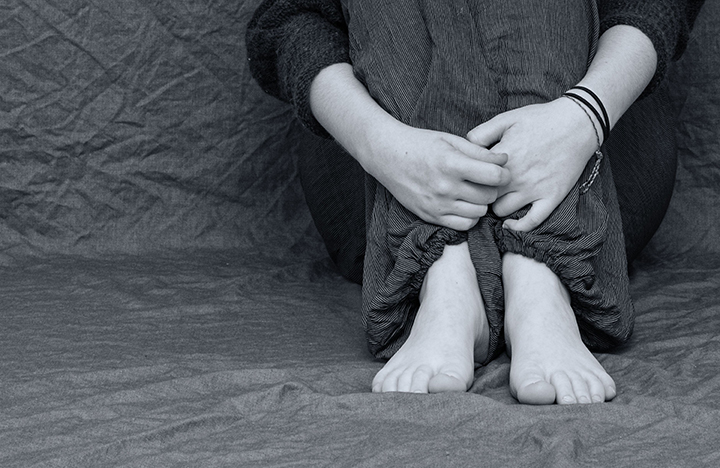The Victim Archetype
Welcome back to our fascinating archetypal journey! Last time, we explored the intricate world of the saboteur archetype, one of the four fascinating survival archetypes that shape our lives. Now, get ready to join me as we explore the depths of the victim archetype.
During our childhood, there were moments that left us feeling unsafe, abused, neglected, and even abandoned—truly victimized. In those tough times, we experienced a whirlwind of powerlessness, defeat, and insecurity. It’s through these experiences that we now have a unique bond with the victim archetype, shaping our understanding of ourselves and the world around us.
The victim is there to protect us from any situation where we might face victimization. It looks out for perpetrators or villains of abuse, neglect, control, or anything that results in a breakdown in boundaries. Our inner victim is there to regulate and maintain healthy boundaries.
We usually feel victimized when there is a boundary that has been crossed. For instance, a person who has experienced sexual abuse has endured the violation of physical boundaries. On the other hand, emotional abuse leaves its victims with the sense of having their emotional boundaries violated.
Therefore, the light side of the victim is to be on the lookout for any possibility of being victimized. Once we acknowledge this presence within us, the victim archetype steps forward, ready to take proactive measures and establish necessary boundaries. Unfortunately, it is often misunderstood and unjustly criticized within the self-help realm.
We are told to never play the victim, but we fail to realize the positive side of it. It would be illogical to find ourselves in an abusive relationship and deny our status as victims. Acknowledging our victimhood becomes the essential first step towards reclaiming our power, taking decisive action, and establishing the boundaries needed to remove ourselves from such detrimental situations. In fact, failing to do so would only perpetuate our own victimization!
The shadow side of the victim is what we all must be aware of. There is a big difference between being a victim and playing the victim. Acknowledging our victimhood empowers us to take action and set boundaries. However, playing the victim is a way for a part of us to fulfill emotional needs and gain control paradoxically. Recognizing this shadow aspect is crucial for personal growth and authentic connections.
The shadow side of the victim is feeling powerless, defeated, deflated, and perceiving life as “happening to us” rather than “happening for us”. The victim is often looking for an excuse to avoid taking action and responsibility. There is often a desire to be rescued from challenging situations. A quote I once heard sums it up beautifully: “Victimhood is anything less than 100% self-responsibility.” Amen to that!
How does a part of us get our emotional needs met by playing the victim? By playing the victim, we can talk ourselves out of taking action or taking ownership. By playing the victim, we continue to point fingers, blame, and outsource responsibility. Playing the victim role can serve certain needs. It may elicit more love and compassion from others and attract rescuers who come to our aid. However, using the powerless victim role as a form of “power play” to manipulate and emotional needs is a risky game. It can lead to repetitive patterns of self-sabotage and hinder personal growth.
The victim archetype extends beyond external circumstances and encompasses how we can victimize both ourselves and others. It’s not solely about feeling victimized by the world around us. In fact, we have the potential to become the perpetrators or villains that we once believed victimized us. It is a common pattern for us to take on roles where we abandon ourselves, echoing the sense of abandonment we experienced from others. We may also subject ourselves to self-judgement, mirroring the judgement we felt from others.
To explore the victim archetype, I invite you to close your eyes. Connect to that part of you that feels defeated, powerless, gets caught in blame or self-pity, and has a hard time taking action and self-responsibility. What are your earliest memories of feeling victimized? What are the aspects of life that you feel have power over you? When your inner victim takes over, what is its strategy? Do you lash out, shut down, point fingers, or blame? Do you use this archetype to try and get more empathy and compassion out of others?
Exploring the victim archetype may pose challenges, but when we approach it with honesty and self-reflection, we can uncover its presence within us. By gaining clarity on the patterns and dynamics of our inner victim, we open the door to recognizing area in our relationships where healthier boundaries are needed. This awareness empowers us to make necessary shifts and changes, reclaiming our personal power along the way. By embracing this transformative journey, we pave the way for reaching our highest potential and creating a path towards a more fulfilling life.
Greg Schmaus
CEO of Healing 4D, a Holistic Health Practitioner, Shamanic Energy Healer, Massage Therapist, the creator of “Healing The Mind,” a 21 day holistic mental health program.
https://www.healing4d.com




